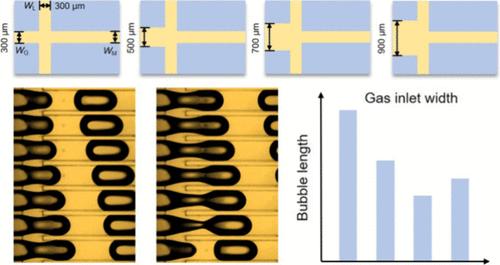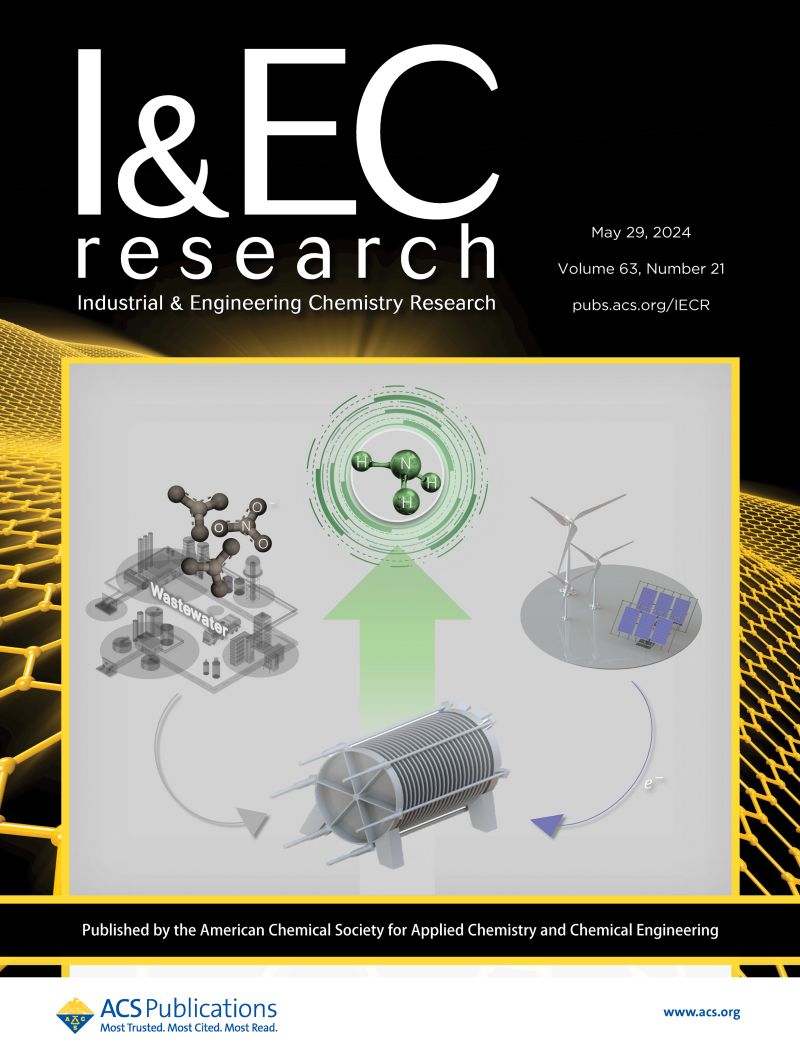一种基于气体动能的策略,用于精确调节流动聚焦微通道中的泰勒气泡长度
IF 3.8
3区 工程技术
Q2 ENGINEERING, CHEMICAL
引用次数: 0
摘要
气泡长度的精确调节决定了微通道的反应性能,但现有方法侧重于构建复杂的气泡生成结构,对操作要求较高。因此,针对流动聚焦微通道,本研究提出了一种改变气体入口动能来调节气泡长度的便捷方法。结果表明,通过改变气体通道宽度可以轻松调节气体入口动能,而通过扩大气体通道宽度可以明显减小气泡尺寸,这首次打破了 T 型交界处气泡尺寸随气体入口宽度增大而变大的传统认知。此外,通过分析流动聚焦和 T 型接合微通道中的两相界面行为,还共同揭示了气道较宽的流动聚焦中形成较小气泡的原因。特别是提出了一个新变量(液体等效停留时间)来描述两相之间的相互作用,并提出了气体入口尺寸的设计准则,以达到流动聚焦微通道中最小的气泡长度。最后,考虑到气体入口动能效应,建立了一个通用气泡长度模型,该模型包含气体和液体的韦伯数之比,以及液体的毛细管数之比。本文章由计算机程序翻译,如有差异,请以英文原文为准。

A Gas Kinetic Energy Based Strategy for the Accurate Regulation of Taylor Bubble Length in Flow-Focusing Microchannels
Accurate regulation of the bubble length determines the microchannel reaction performance, but the existing methods focus on the construction of complex bubble generation structures with high operating requirements. Accordingly, for the flow-focusing microchannel, this study proposes a convenient method that varies the gas inlet kinetic energy to adjust the bubble length. The results show that the gas inlet kinetic energy can be easily regulated by changing the gas channel width, and the bubble size is markedly reduced via expanding the gas channel width, which for the first time breaks the traditional cognition that the bubble size becomes large with the gas inlet width in the T-junction. Besides, the reason behind the formation of smaller bubbles in the flow-focusing with a wider gas channel is jointly revealed by analyzing the two-phase interface behaviors in flow-focusing and T-junction microchannels. Especially, a new variable (the liquid equivalent residence time) is proposed to describe the interaction between the two phases, and the design criterion for the gas inlet size is proposed to reach the minimal bubble length in flow-focusing microchannels. Finally, considering the gas inlet kinetic energy effect, a universal bubble length model containing the ratio of Weber numbers for gas and liquid and capillary number for liquid is developed, which shows its excellent performance for the flow-focusing microchannels used in this work and other studies.
求助全文
通过发布文献求助,成功后即可免费获取论文全文。
去求助
来源期刊

Industrial & Engineering Chemistry Research
工程技术-工程:化工
CiteScore
7.40
自引率
7.10%
发文量
1467
审稿时长
2.8 months
期刊介绍:
ndustrial & Engineering Chemistry, with variations in title and format, has been published since 1909 by the American Chemical Society. Industrial & Engineering Chemistry Research is a weekly publication that reports industrial and academic research in the broad fields of applied chemistry and chemical engineering with special focus on fundamentals, processes, and products.
 求助内容:
求助内容: 应助结果提醒方式:
应助结果提醒方式:


